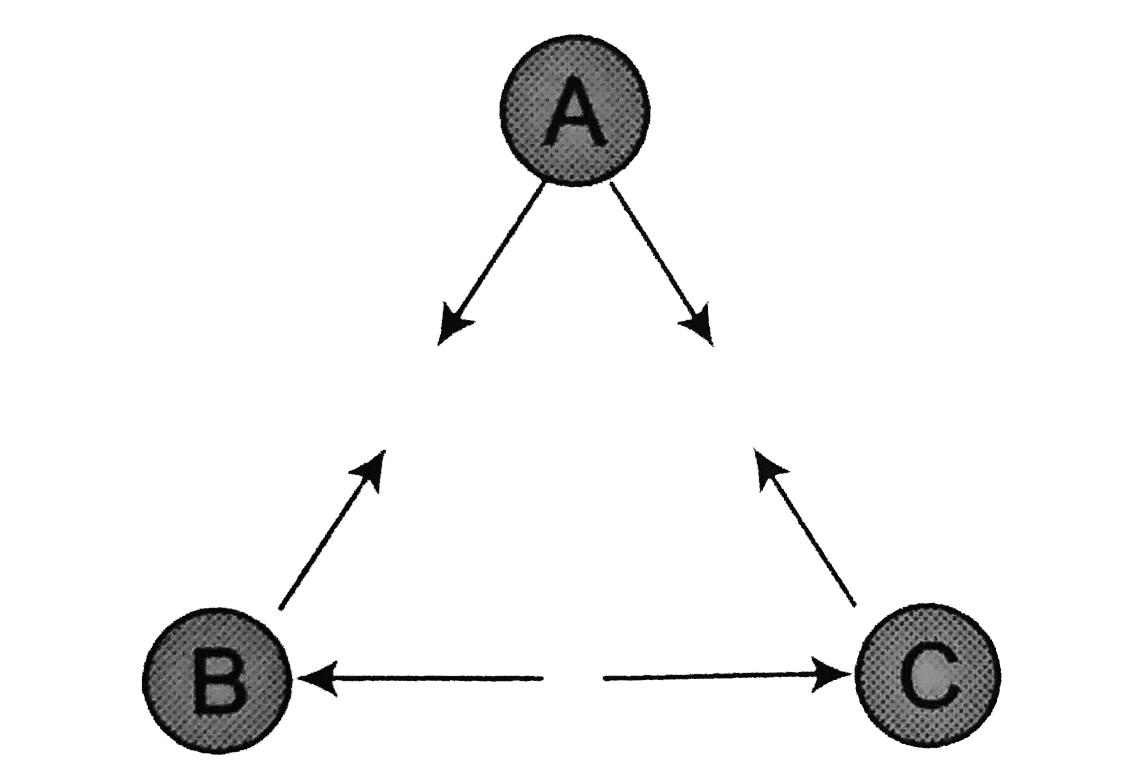A ball is thrown vertically upwards. It was observed at a height h twice after a time interval Δt. The initial velocity of the ball is Solution in Gujrati
√8gh+(gΔt)2
√2gh+(gΔt2)2
√8gh+(2gΔt)2
√2gh
The correct Answer is:B
Let the ball be at height h at time't' then
h=ut−12>2⇒t2−2ugt+2hg=0
which has two roots t1&t2⇒t1t(2)=2hg&t1+t2=2ug
But t2−t1=Δt so (Δt)2=(t1+t2)2−4t1t2
Topper's Solved these Questions
- TEST PAPERSBOOK - ALLEN CHAPTER - TEST PAPERSEXERCISE - Part-1 Physics
15 Videos
- TEST PAPERSBOOK - ALLEN CHAPTER - TEST PAPERSEXERCISE - part-2 physics
73 Videos
- TEST PAPERSBOOK - ALLEN CHAPTER - TEST PAPERSEXERCISE - PAPER 2
60 Videos
- TEST PAPER 4BOOK - ALLEN CHAPTER - TEST PAPER 4EXERCISE - PHYSICS
45 Videos
- UNIT & DIMENSIONS, BASIC MATHS AND VECTOR BOOK - ALLEN CHAPTER - UNIT & DIMENSIONS, BASIC MATHS AND VECTOR EXERCISE - Exercise (J-A)
7 Videos
Similar Questions
A quantity of 2 mole of helium gas undergoes a thermodynamic process, in which molar specific heat capacity of the gas depends on absolute temperatureT , according to relation:
C=3RT4T0
where T0 is initial temperature of gas. It is observed that when temperature is increased. volume of gas first decrease then increase. The total work done on the gas until it reaches minimum volume is :-
View SolutionA bead is connected with a fixed disc of radius R by an inextensible massless string in a smooth horizontal plane. If the bead is pushed with a velocity v0 prependicular to the string, the bead moves in a curve and consequently collapses on the disc. Then

View SolutionThe diagram shows the arrangement of three small uniformally charged spheres, A,B and C. The arrow indicate the direction of the electrostatic forces acting between the spheres (for example, the left arrow on sphere A indicates the electronstatic force on sphere A due to sphere B). At least two of the spheres are positively charged. Which sphere, if any, could be negatively charged?

View SolutionTwo forces, each of magnitude F have a resultant of the same magnitude F. The angle between the two forces is
View SolutionMatch List I with List II and select the correct answer using the codes given below the lists :

View SolutionA ball is thrown vertically upwards from the ground. It crosses a point at the height of 25 m twice at an interval of 4 secs. The ball was thrown with the velocity of
View SolutionA ball is thrown vertically upwards from the top of tower of height h with velocity v . The ball strikes the ground after time.
View SolutionA ball is thrown vertically upwards. It was observed at a height h twice after a time interval Deltat . The initial velocity of the ball is
View SolutionIf a ball is thrown vertically upwards with a velocity of 40m/s, then velocity of the ball after 2s will be (g=10m/s2)
View SolutionA ball is thrown vertically upwards from the ground. It crosses a point at the height of 25 m twice at an interval of 4 secs. The ball was thrown with the velocity of
View SolutionA ball is thrown upward with an initial velocity of 100 ms^(-1) . After how much time will it return ? Draw velocity -time graph for the ball and find the maximum height attained by the ball. [Assume, g = - 10 ms ^ { - 2 } ]
View Solutionएक गेंद को u वेग से ऊर्ध्वाधर ऊपर की ओर फेंकने पर यह h ऊँचाई तक जाती है | यदि इसे 2u वेग से फेंका जाए तब ऊँचाई प्राप्त होगी-
View SolutionA ball is thrown vertically upward with a speed v from a height h above the ground . The time taken for the ball to hit the ground is
View SolutionA person throws balls into air vertically upward in regular intervals of time of one second . The next ball is thrown when the velocity of the ball thrown earlier becomes zero . The height to which the balls rise is …
(Assume , g = 10ms−2)
View SolutionWhen a ball is thrown vertically upwards, at the maximum height
View SolutionA ball thrown vertically upward with initial velocity u. Which of the following graphs represent the velocity of ball correctly as function of time?
(Take upward direction as positive)
View Solution
